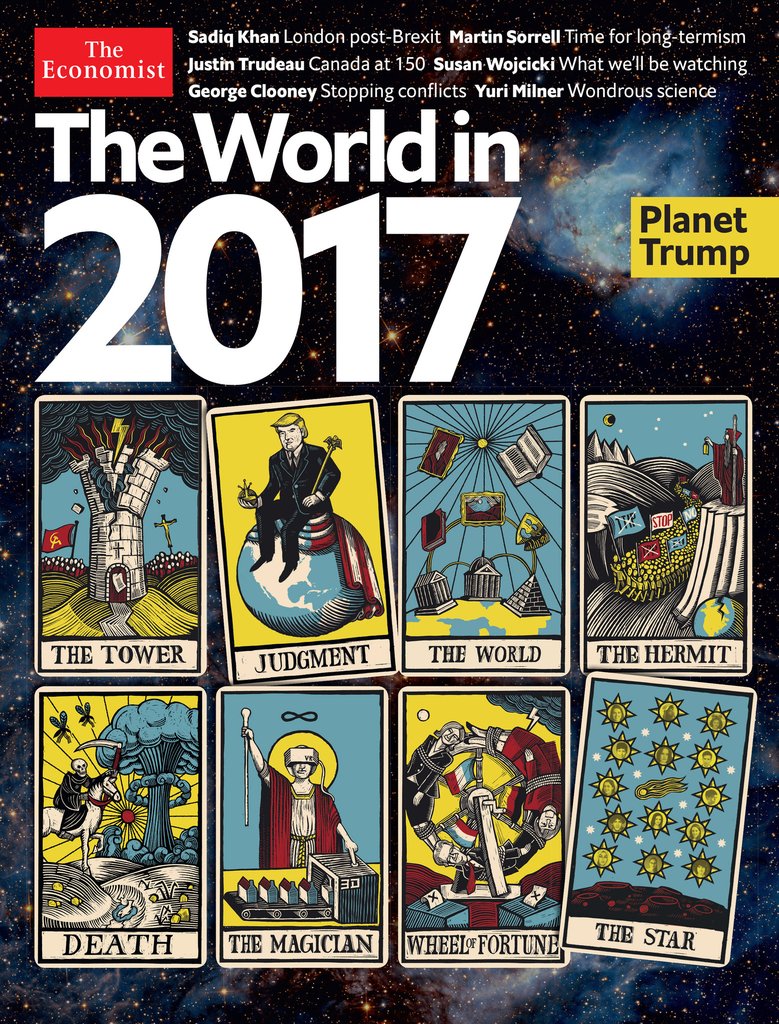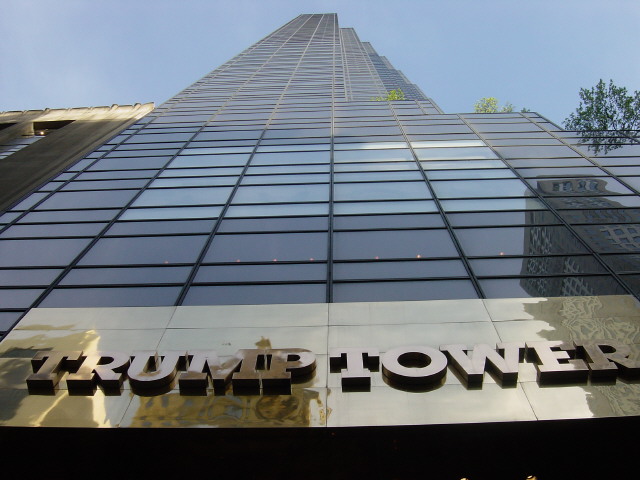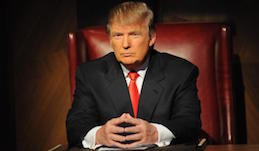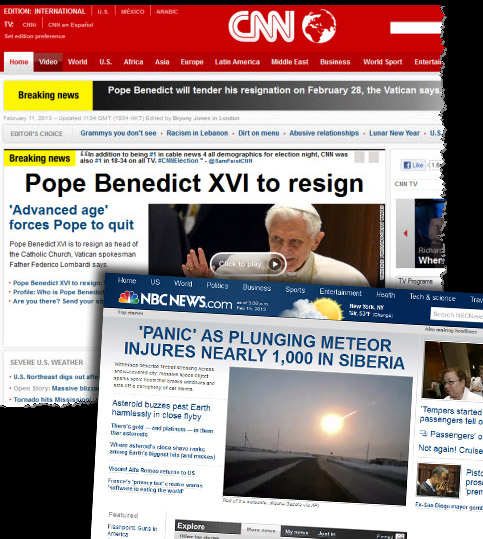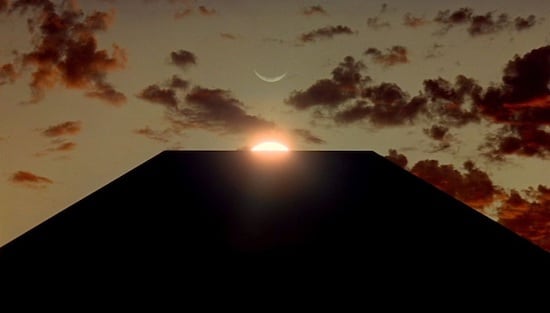|
جواب |
رسائل 1 من 7 في الفقرة |
|
New Year's Prophecy
Intertemporal Perspective via 2016 Tower & Star Rituals
By Goro Adachi
December 30, 2016
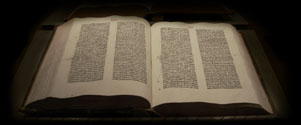
Century II - 41
The great star will burn for seven days,
The cloud will make two suns appear:
The large mastiff will howl all night
When the great pontiff changed territory.
- Nostradamus
Not all New Year's Days are created equal and this one coming up happens to be a special one. The previous one was special as well, both being attached to the year 2016, the point of no return. And if the pattern holds, we are in for a whole new set of inter-temporal "clues" which, if decoded properly, should be quite prophetic in nature. Decoding these things happens to be my specialty, or obsession...
It's telling that The Economist's annual, end of the year crystal ball edition features a cover with tarot cards. Obviously they were inspired by the irresistible combination of "Trump" (cards) and the idea of divination (predicting the future). Not too surprising there. (What is surprising though is how most people trying to "decode" it can't even crack the first step: The only two tilted cards, "Judgment" and "The Star", are card #20 and card #17 per tradition, spelling out "20-17" or "2017".)
The Economist is actually a bit late to the party as there was a whole lot of foreshadowing going on last year through the tarot symbolism on New Year's Eve/Day (2015/2016). It came in the form of Dubai's tower inferno evoking the Tower card numbered 16 (as in 20 16)...
...in effect foreshadowing the earthshaking rise of "Trump" who famously lives in Trump Tower (= Tower trump card).
Extending the pattern forward in time would have the new year 2017 correspond to tarot card #17 - " The Star".
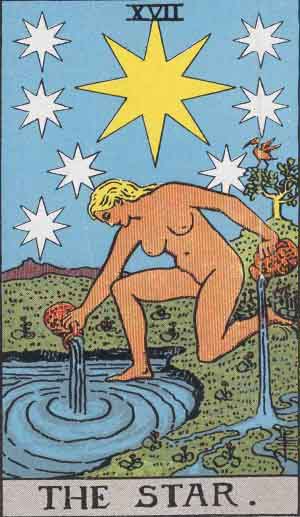
It would most certainly be Sirius on New Year's Eve/Day as a magical celestial moment arrives every year when the brightest star in the night sky "culminates" due south reaching its highest point right around midnight on New Year's Eve/Day.
But as I said, it's extra special around 2016. I'm quite aware of this, and it seems so was Nostradamus. Let me introduce you to quatrain II-41, or as I like to call it the "Sirius quatrain":
Century II - 41
La grand' estoille par sept jours bruslera,
Nuee fera deux soleils apparoir:
Le gros mastin toute nuit hurlera,
Quand grand pontife changera de terroir.
The great star will burn for seven days,
The cloud will make two suns appear:
The large mastiff will howl all night
When the great pontiff changed territory.
- Nostradamus
Right now it is highly relevant and timely as shown below:
Line 1: The great star will burn for seven days
Being the brightest star in the night sky, Sirius certainly qualifies as a "great star". It "burns" in the sense that the name "Sirius" means "scorcher" plus the phrase "Dog Days of summer" derives from Sirius's nickname "Dog Star". Even the "seven days" (sept jours) part relates to Sirius in that ancient Egyptians called the star Spd, Spdt, or Sept, resonating with the French sept meaning "seven. ("Seven days" can also allude to the 7-day festival Saturnalia, Dec 17-23.)
Line 2: The cloud will make two suns appear
In esoteric tradition Sirius has been considered the "second sun".
Line 3: The large mastiff will howl all night
Sirius is the "Dog Star" ("mastiff") and it "howls all night" on New Year's Eve/Day by being visible all night long. (Culminating around midnight implies being visible from dusk to dawn.)
Line 4: When the great pontiff changed territory
The last time there was a change in the papacy was back in 2013 when Pope Benedict XVI stepped down and Pope Francis took over. Unbeknownst to most, it managed to multicontextually encode an arrow pointing ahead to the year 2016:
- Pope Benedict XVI is "16" (XVI), numerically resonating with 2016 and the Tower card (XVI)
 
- Pope Francis's first foreign trip ("changing territory") as head of the Catholic Church was to Rio de Janeiro, Brazil in July 2013, where the Summer Olympics would take place in 2016
In the context of the "Sirius quatrain" II-41, it makes a lot of sense for Rio to be highlighted in this manner. It has to do with the real, hidden reason behind the name "Rio de Janeiro" or " River of January" which I'm revealing here for the first time anywhere (aside from STRUG/members section which is always ahead)... Firstly, the term " January" (Janeiro) derives from Janus the god of beginnings, endings, time, and doorways. Basically a perfect set of descriptions for New Year's Eve/Day (= beginning of January).
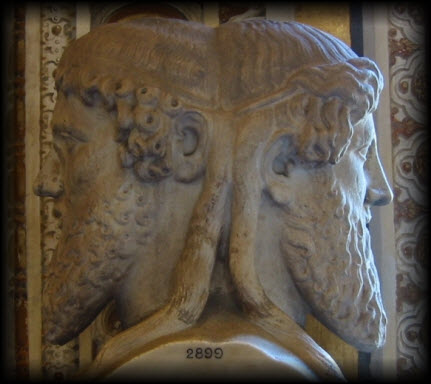
And it just so happens it's right around New Year's Day, when Sirius "howls all night", that Rio and the Sun are aligned in terms of latitude & declination. In other words, the Sun is directly overhead at noon in Rio right around New Year's Day. Rio in this way indeed is a "city of Janus/January"!

As above, so below... Sirius is the " New Year's star" above, Rio de Janeiro is the " New Year's city" below. Having established this and 2016 being the year of the Rio Olympics, we can then quite easily infer that the beginning and ending of 2016 are of special, "ritualistic" significance. We already saw this in action at the beginning of 2016 (Dubai tower fire), and we are now about to witness something at the end of 2016. The straightforward expectation would be that it would reflect " The Star" card - #17 representing "2017" - just as the Dubai tower inferno was a simulation of the "Tower" tarot card, #16. This would mean it would likely involve Sirius on New Year's Eve/Day. (I may actually already know the ritual taking place, but I'll save it for another article, perhaps early next year.) There is another approach here to discerning the nature of the end of 2016 "ritual(s)". It has to do with the fact that Rio and the Sun are also aligned on ~December 10th (equidistant from the solstice).
That "preview" window precisely coincided with a major geopolitical flareup stemming from the apparent Russian cyber attacks against the US during the 2016 presidential election.
 It's an ongoing situation, happening in real time as I write this and it wouldn't be surprising if we hear more about the US retaliation against Russia around the New Year's Eve/Day weekend, such as actual US cyber attacks against Russia.
(I've consistently pointed to the significance of the Russian cyberwar situation since the very beginning. See: Jul 26 tweet, Jul 27 tweet, Jul 30 tweet, Aug 30 update. Here we are, it's like the Cold War has returned.) Saturnalia (Dec 17-23) was another important window we were watching very closely... (Saturnalia starts on Pope Francis's birthday, by the way.) My tweet from Nov 24:
And it was intense indeed...
Notable as it connects right back to the 2015-2016 New Year's Eve/Day "ritual". The name "Dubai" means "market". And the fire there took place right next to the Dubai's spectacular New Year's fireworks.
Makes us wonder if these constitute an omen foreshadowing a major market/financial event coming in the New Year.

I'm going to end this article here, but really we've just scratched the surface. Just the tip of the iceberg for what's unfolding... because 2016 was a tipping point, the point of no return. We didn't even touch on the earth changes and the sixth mass extinction already being discussed on STRUG...
https://www.goroadachi.com/etemenanki/newyears-prophecy.html |
|
|
 أول
أول
 سابق
2 إلى 7 من 7
لاحق
سابق
2 إلى 7 من 7
لاحق
 آخر
آخر

|
|
جواب |
رسائل 2 من 7 في الفقرة |
|
|
|
|
جواب |
رسائل 3 من 7 في الفقرة |
|
|
|
|
جواب |
رسائل 4 من 7 في الفقرة |
|
|
|
|
جواب |
رسائل 5 من 7 في الفقرة |
|
|
|
|
جواب |
رسائل 6 من 7 في الفقرة |
|
|
|
|
جواب |
رسائل 7 من 7 في الفقرة |
|
LAS SATURNALIA Y LA NAVIDAD
El décimo mes del calendario romano era, en cuanto a festividades, el más espectacular y animado de todo el año. En este mes se conmemoraba la idílica edad de oro en la que Saturno reinaba sobre el resto de divinidades. También era el mes en el que se producía el solsticio de invierno, fecha señalada como el nacimiento de los dioses solares. Desde las Kalendas (día 1) hasta los Idus (día 13) sólo cabe destacar las segundas Faunales (el día 5) en conmemoración al dios Fauno y el Agonal, ritual que consistía en sacrificar un carnero al dios Sol (el día 11) Ese mismo día se celebraba sólo en la Urbe el Septimontio, las siete colinas, una festividad menor de los poblados latinos que formaron la arcaica Roma.

El día 15 se celebraba las segundas Ludii Consuales, en honor al dios de los silos, Conso. El rito principal consistía en celebrar carreras de mulos, similares al «Tiro y Arrastre» que aún se practica en algunas localidades rurales de la Comunidad Valenciana.
El gran momento del mes, diría que hasta del año, llegaba el día 17. Era el día en el que comenzaban las Saturnalia, las grandes fiestas en honor a Saturno. Fue una festividad tan apreciada por la civilización romana que, ante la imposibilidad de concentrar tanta actividad en un solo día, se tuvieron que prolongar los festejos hasta el día 23. Muy probablemente, las Saturnalia tengan su origen en el fin de las labores agrícolas, cuando los campos se preparan para el invierno y las tareas de campesinos y esclavos se ralentizan. Recordemos que la sociedad de la antigua Roma era eminentemente agraria. Como serían de importantes estas festividades para que las escuelas cerrasen, algunas conductas frívolas femeninas y masculinas estuviesen bien vistas, se pudiese jugar a los dados en público, se invirtiesen los papeles entre amos y esclavos, corriese el vino a raudales y todos los miembros de la familia recibiesen un regalo, fuera cual fuese su condición. Además, todos los esclavos recibían de sus amos una generosa paga extra en moneda o vino (excepto los pobres desgraciados que tuvieron el infortunio de servir al roñoso de Marco Porcio Catón).
Desde el día 17 al 23 se sucedían los banquetes y las procesiones desenfrenadas (que fueron el embrión para los futuros carnavales). Los plebeyos y proletarios se erigían en jueces, y los patricios en siervos. Se realizaba la elección del «Rey de las Burlas» y, por fin, después de tantos días de júbilo, llegaba el solsticio de invierno, consagrado a Jano, el dios de los principios, fecha considerada en la antigüedad como la Puerta de los Dioses.
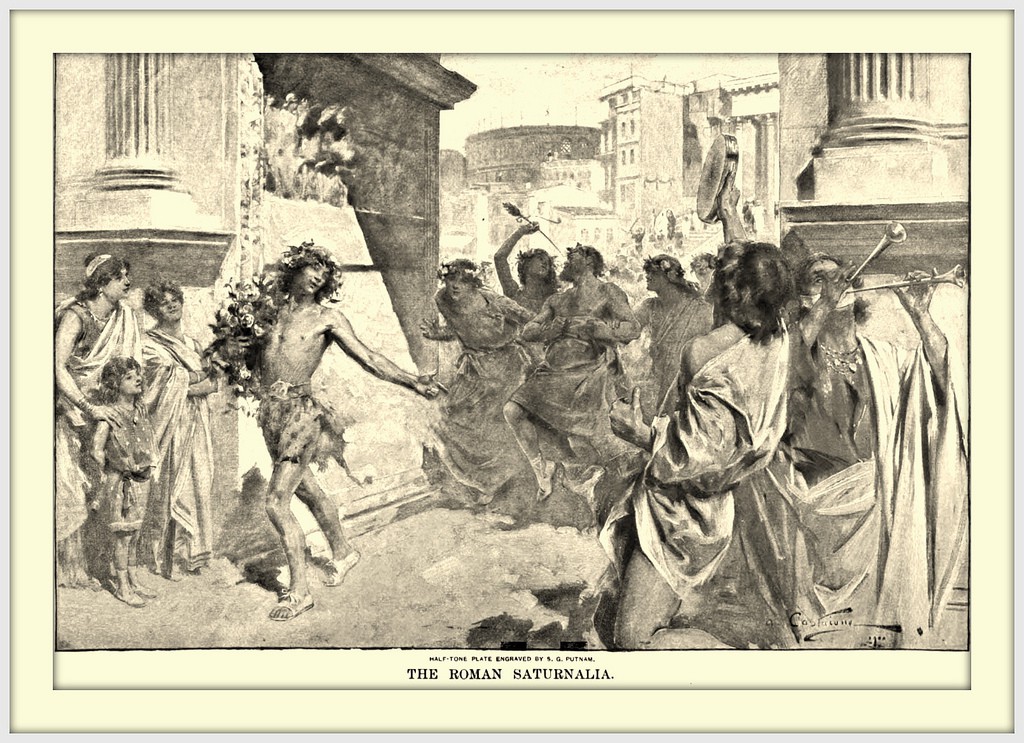
Esta cadena de conmemoraciones concluía el día 25. En Asia se conocía esta fecha como el «Día del Sol Invicto». Fue una festividad menor hasta que el emperador Aureliano, en el año 274, se valió de ella para relanzar el damnificado culto imperial, proclamándose representante de la «luz divina». Curiosamente, Mithra, el dios persa del cielo y la luz que adoptó como suyo medio ejército romano, nació este mismo día… que casualidad… como también lo hizo el príncipe Shirdarta (más conocido para nosotros como Buda) y también el dios Dionisos. ¿A qué se debe esta «casualidad»? Como casi todo, tiene una explicación: en el año 325 tuvo lugar el Concilio de Nicea (hoy Iznik, Turquía), la primera reunión eclesiástica cristiana posterior a la gran persecución de Diocleciano convocada por el emperador Constantino para ordenar las corrientes religiosas que convulsionaban la nueva fe recién tolerada. Fue en este concilio donde los obispos allí congregados decidieron colocar el impreciso nacimiento de Jesús en esta fecha del 25 de Diciembre, despachándose de paso con este movimiento al molesto Mithra y a la encarnación imperial de la «Luz Divina»
En mi opinión, y que no se me ofendan los más devotos cristianos creyentes a pies juntillas en los textos sagrados, es muy difícil de entender que hace dos mil años un señor cincuentón con su joven mujer embarazada de casi nueve meses se atreviese a cruzar sólo y en burro las peligrosas estepas de Samaria, y más en invierno. Además, el edicto de empadronamiento imperial tendría lugar, como otros que conocemos de la jurisprudencia romana, a principios de primavera, por lo que es más lógico pensar que el hijo de María y José naciese después de su difusión en Judea, entre Marzo y Abril. Ahora, que cada uno que crea en lo que quiera, que para eso está la libertad de credo.
El día 26 se celebraba una festividad de origen heleno, el Háloa. Estaba dedicada la fertilidad, representada por Ceres, y sólo participaban en ella mujeres, las cuales se desinhibían en una pícara procesión ostentando símbolos fálicos y actitudes lésbicas.
El día 31 era la víspera de las Strenas. Hogueras enormes y bullicio callejero acompasaban la última noche del año… Ya veremos en Januarius en que consistían aquellas curiosas festividades en honor a la diosa Strenia.
Colaboración de Gabriel Castelló autor de Valentia.
https://historiasdelahistoria.com/2009/12/15/december |
|
|
 أول
أول
 سابق
2 a 7 de 7
لاحق
سابق
2 a 7 de 7
لاحق
 آخر
آخر

|



